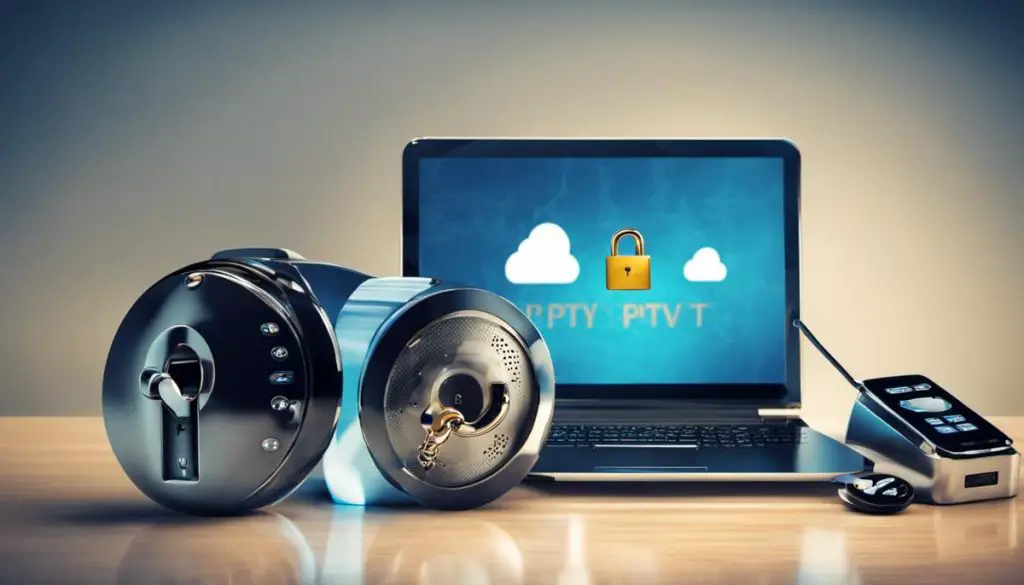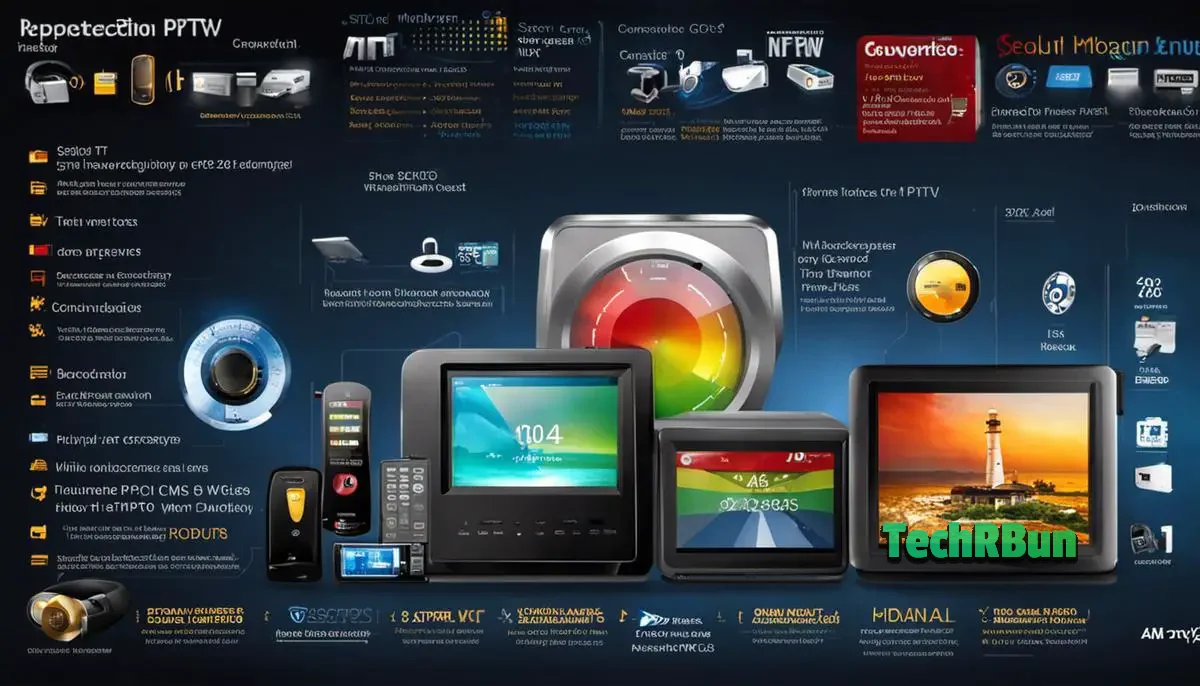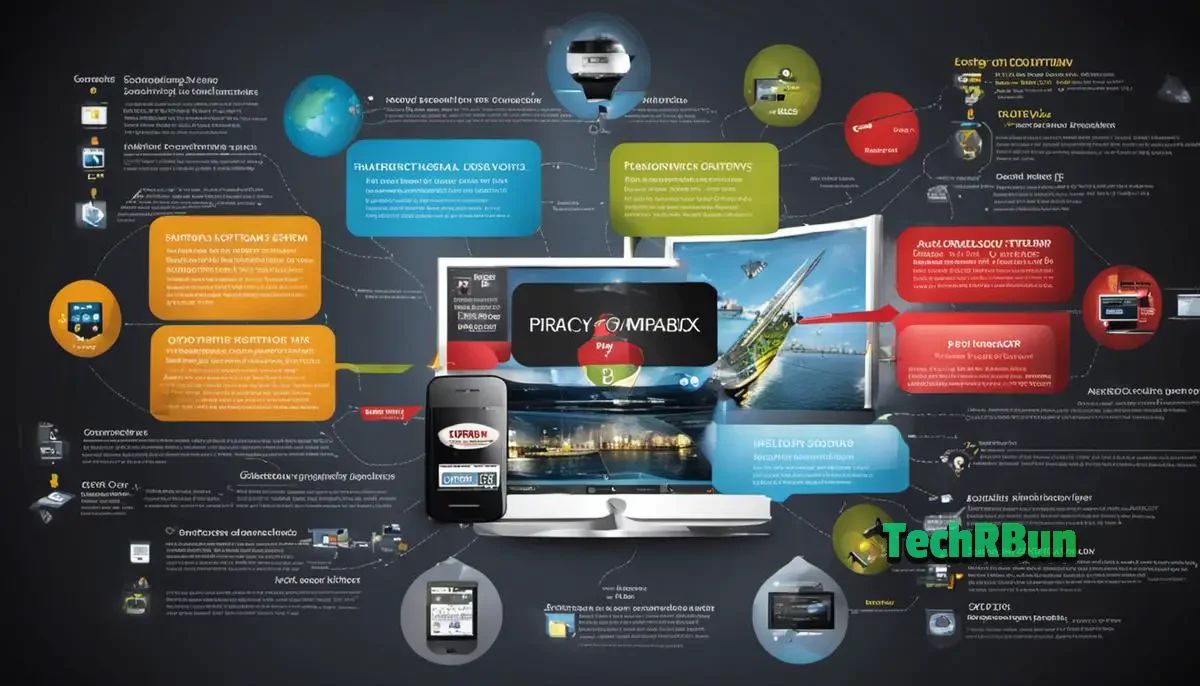
As advancements in technology continue unabated, entertainment and media consumption have witnessed significant changes that have redefined users’ experiences.
Internet Protocol Television (IPTV), one such revolutionary shift in the realm of multimedia service, offers an impressive service efficiency and seamless viewing experience.
However, these laudable strides are often shadowed by the rising menace of service piracy and unauthorized access, threatening the service providers’ revenue and reputation.
The objective of this investigation is to delve into the mechanisms defining IPTV piracy, its implications, and practical strategies that can be employed to safeguard providers from these threats.
An informed understanding of how illicit set-top boxes and piracy networks operate is integral to comprehending and combatting IPTV piracy.
This discussion further extends to explore Technological Protection Measures (TPMs) and the applicability of legal principles and policies to secure IPTV services.
Table of Contents
Understanding IPTV Piracy
Known as Television’s rebellious cousin, IPTV is changing the traditional format of broadcasting into something much more flexible and engaging.
With its on-demand features and versatility, it is evident why IPTV (Internet Protocol Television) services have surged in popularity in recent years. However, this realm of digital revolution is also plagued with a pervasive menace, known as IPTV piracy.
IPTV piracy refers to the unauthorized access and distribution of copyrighted television programming through various internet-based platforms.
This act of breaching operational protocols and bypassing the legal framework brushes the ethical line, facilitating streaming without permissions from copyright holders.
The illicit practice tarnishes the IPTV landscape, affecting both legal IPTV service providers as well as the end-users.
Often camouflaged under the guise of third-party add-ons, pirated IPTV services offer users access to paid TV channels at heavily discounted prices; an offer too irresistible for some.
For tech enthusiasts willing to shelve ethical considerations, it might seem a lucrative proposition. But, let’s delve into the broader perspective and discuss the significant impacts.
First, from an economic standpoint, IPTV piracy inflicts huge losses on broadcasters and content owners. The substantial revenue leakages result from pirated material being made available on the internet, often leading to reduced profit margins and threatening the viability and sustainability of licensed IPTV services.
A study by Digital TV Research estimates lost earnings of $9.1 billion due to television and movie piracy in 2019 alone.
The legal repercussions of IPTV piracy shouldn’t be scoffed at either. Authorities are cracking down on illegal IPTV providers, and users, with a razor-sharp focus.
This unregulated realm offers no legal protections. Therefore, getting involved in such acts may land users in hot waters, with penalties ranging from massive fines to potential jail time.
From a service quality standpoint, legal IPTV services simply outshine their illicit counterparts. Pirated streams have inherent limitations, involving low video quality, intermittent buffering, and a lack of customer support.
The potential savings can quickly vanish when faced with the reality of frequent service interruptions and instability.
And let’s not forget about security risks. Unmonitored IPTV streams may serve as a conduit for cyber threats.
From hacking to phishing attempts, illicit IPTV services can expose unsuspecting users to a myriad of risks, compromising their privacy and security.
In a nutshell, while IPTV piracy might seem like easy access to coveted content, it carves a destructive path not only for the broadcasting industry but also for its end-users.
Your adherence to legal and ethical viewing practices is more than just a personal choice. It contributes to the healthier cycle of content production and consumption, ensuring a secure and stable broadcast environment.
After all, tomorrow’s ground-breaking programme, series, or documentary depends on today’s viewer integrity.

Technological Protection Measures (TPMs)
Technological Protection Measures (TPMs) remain at the forefront when it comes to countering the pervasive problem of IPTV piracy.
These digital lock mechanisms aim to safeguard the integrity and commercial value of content, a critical aspect often compromised by unauthorized use and distribution.
IPTV security can be fundamentally enhanced with the adoption of two broad kinds of TPMs: copy protection schemes and digital watermarking.
The former prevents unauthorized copying of content, while the latter enables identification and tracking of illegitimate content distribution.
Copy Protection Schemes, such as High-bandwidth Digital Content Protection (HDCP) and Conditional Access System (CAS), form the first line of defense against IPTV piracy. HDCP, an interface-specific protocol, secures the transmission of digital content between sender (source) and receiver (sink) denying access to unauthorized intermediaries.
CAS, on the other hand, controls access to content predicated on subscription levels, restricting content broadcast to authorized users.
Digital watermarking, in contrast, functions as an investigative tool, allowing for tracing pirated content back to the illegal distributor.
The imperceptible, yet indelible, imprints in the content can aid legal enforcement agencies to identify the origin of piracy, thereby containing its spread.
Moreover, content encryption technologies like Secure Real-Time Transport Protocol (SRTP) and Internet Protocol Security (IPSec) add another layer to IPTV security.
While SRTP offers secure delivery of multimedia over IP networks, IPSec safeguards IP communications by encrypting each IP packet during a communication session.
However, honing an effective IPTV security strategy extends beyond just adopting TPMs.
It necessitates an end-to-end approach encompassing strict password policies, secure payment systems, and regular software updates. Indeed, even user education plays a pivotal role in ensuring the security of an IPTV system.
Nonetheless, the emergence of more sophisticated forms of IPTV piracy demands an ever-evolving strategy. The future of IPTV security could be further secured with the integration of blockchain and artificial intelligence technologies, which could potentially predict, identify, and eliminate threats, before they can do any harm.
In brief, TPMs provide a powerful toolset for ensuring IPTV security, but they are not a panacea. Their true potential can only be harnessed through their harmonious integration with other security practices and an informed user base, ultimately nurturing a sustainable, secure, and legally compliant IPTV ecosystem.

Legal and Policy Remedies
Piracy remains a thorny issue despite the advancements in technology, including the continued growth of Internet Protocol Television (IPTV).
It is crucial to use legal and policy measures to counterbalance this criminal activity, alongside instilling a strong sense of integrity in consumers–who have an imperative role in supporting legitimate content producers and broadcasters.
Key to cracking down on IPTV piracy is the effective enforcement of intellectual property rights. Governments and regulatory bodies should not only create, but also rigorously implement stringent laws against IPTV piracy, ensuring perpetrators are penalized.
They must facilitate international cooperation to comprehend the global scope of IPTV piracy, and foster coordination between Internet Service Providers (ISPs) and rights holders.
ISPs can be encouraged, or depending on the jurisdiction, legally bound, to report any piracy-related activities, thus providing an additional layer of scrutiny.
The stoppage of financial revenues that flow to pirates is another promising measure. By forcing financial institutions to block transactions related to illicit content, piracy outfits are effectively starved out.
Countries like the United States have been successful in accomplishing this through court-ordered injunctions against pirate services.
On a policy level, governments have a responsibility to raise widespread awareness about the illegal nature and costs of IPTV piracy.
Promoting public campaigns that highlight the detrimental impacts on the industry, alongside the potential security risks associate with piracy, can significantly reduce its appeal.
Implementing stricter regulations for device manufacturers and resellers, enforcing liability for those that knowingly facilitate piracy, can serve as a deterrent.
The UK, for instance, has implemented such a policy, forcing vendors selling “fully-loaded” Kodi boxes to face justice.
Technological Protection Measures (TPMs) contribute significantly to the battle against IPTV piracy.
These range from copy protection schemes, High-bandwidth Digital Content Protection (HDCP), to the Conditional Access System (CAS), each designed to thwart unauthorized access to content.
Another essential tool is digital watermarking, which allows content owners to identify when their material is being pirated and track the initial point of leakage.
Conversely, technologies such as Secure Real-Time Transport Protocol (SRTP) and Internet Protocol Security (IPSec) contribute by creating robust, secure pathways for the transmission of content.
What is clear is that an end-to-end approach is mandatory to curb IPTV piracy effectively. Good password policies, secure payment systems, and regular software updates fall within this practice, adding layers of defense against piracy. Moreover, user education about IPTV security helps reduce unwitting participation in piracy.
Technological advancements, such as artificial intelligence (AI) and blockchain, promise new, unforeseen solutions. AI can automate the real-time detection of illegal streams, while blockchain’s inherent security makes it a possible foundation for future IPTV distribution systems.
Conclusion
In conclusion, while IPTV piracy is a formidable adversary, a combination of legal and policy approaches coupled with cutting-edge technology and public awareness makes a powerful weapon to tackle it head-on.
However, the threats are ever-evolving, demanding a constant evolution of strategies from industry, technology, and legal perspectives.

Despite the mounting challenges, technological, legal, and policy remedies offer promising strategies to combat IPTV piracy.
By securing content through techniques such as encryption and key-distribution, tracing unauthorized use of services with watermarks and fingerprints, one can ensure the integrity of the transmission and the sanctity of copyrighted content.
Alongside technological solutions, legal mechanisms in the form of stringent copyright laws, concrete end-user agreements, and strategic collaborations with Internet Service Providers (ISPs) to block unlawful content further fortify defenses against piracy.
This comprehensive multi-faceted approach can not only protect IPTV service providers against unauthorized access and piracy but also help establish a robust framework that continually adapts to evolving threats, safeguarding welfare and sustainability of the industry.







